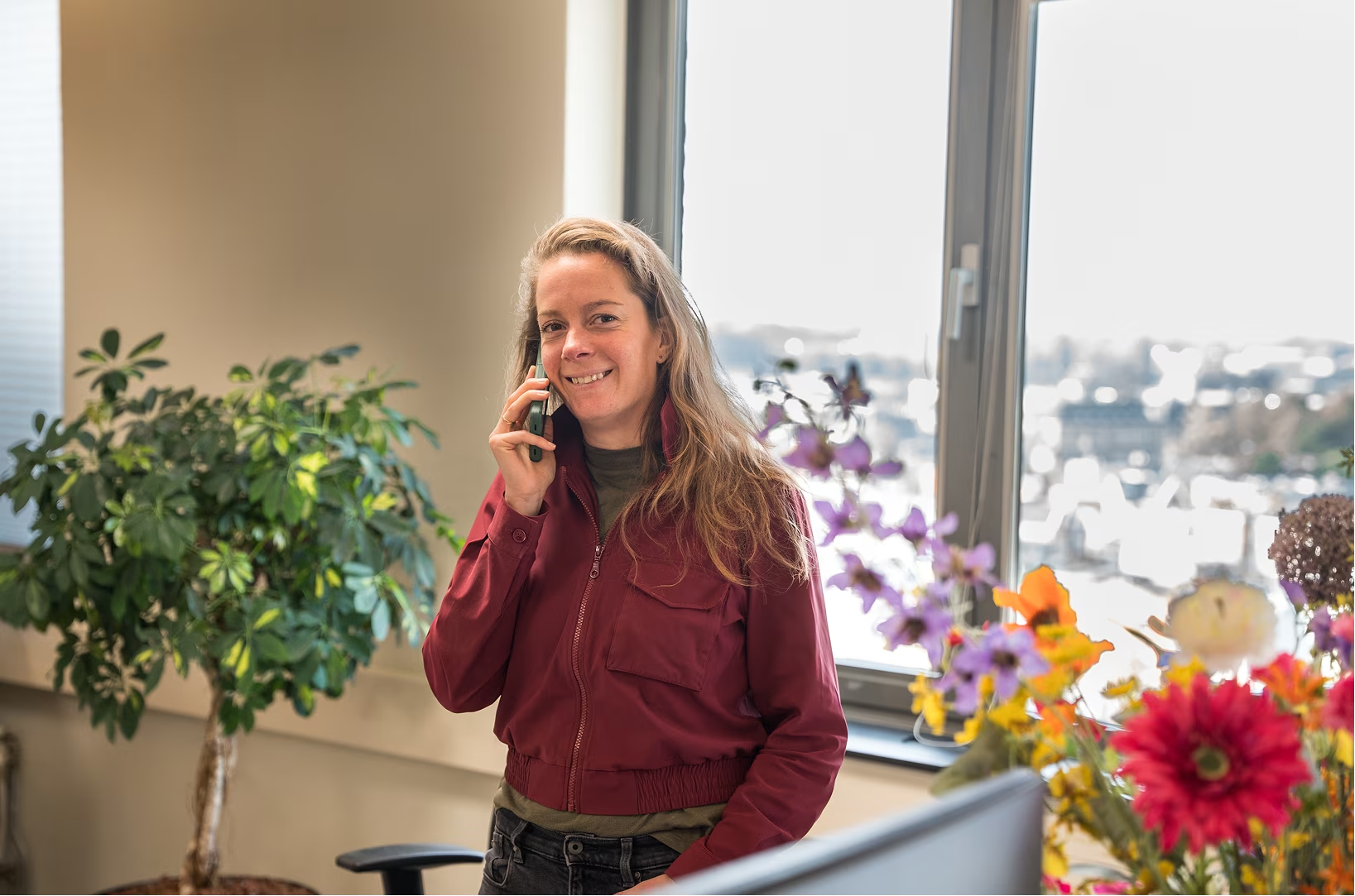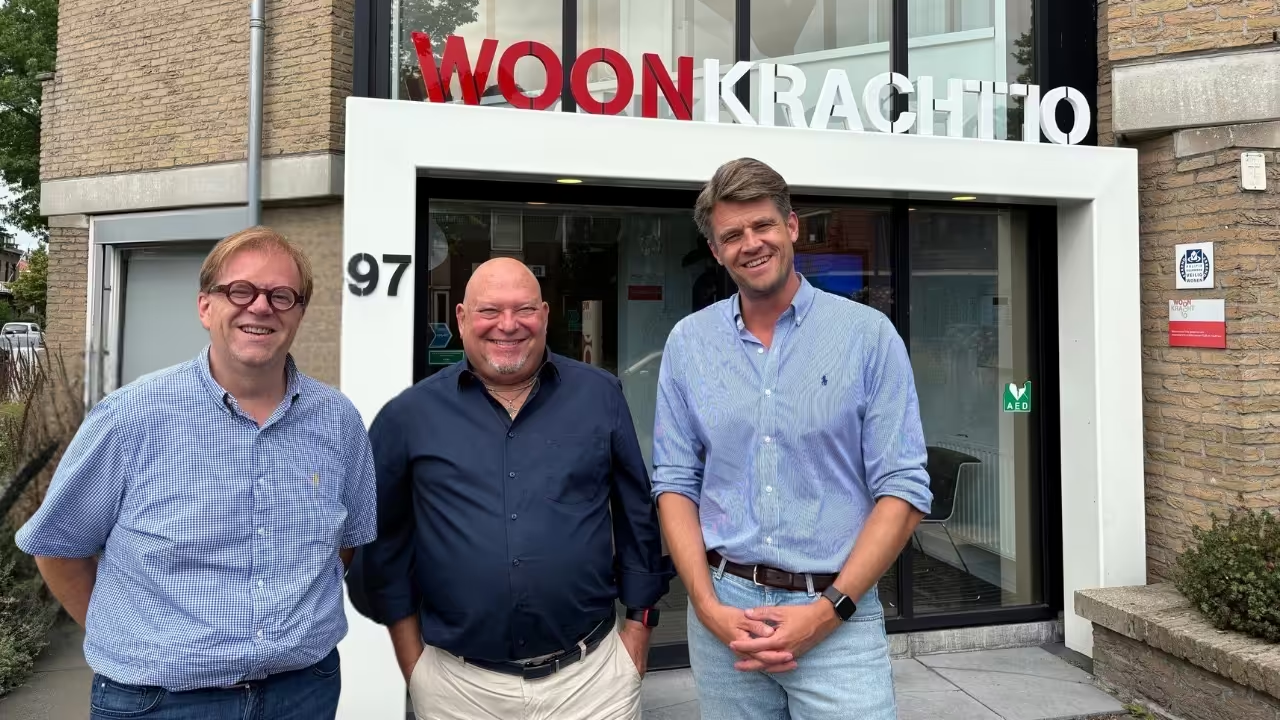Since December 2015, no less than 12,000 employees of the municipality of Rotterdam have been using their RIO social intranet. How are things doing in 2018? We spoke to Petra Berrevoets, corporate digital media advisor, earlier about the implementation process.
Branch: Government
Staff: 15,000+
Intranet since: 2015
We expanded the interview with up to date information. Petra talks about what goals were achieved and how they achieved them. Future plans are also discussed, because the development of the digital workplace never stands still!
“Put the user first. So ask them what they want. You'd be surprised how many people want the same thing as you do.”
Do you want to know how other municipalities have also successfully used their social intranet? Read the free ebook: '7 steps to a successful social intranet'.
Why did you choose a social intranet?
The main reason for choosing a social intranet was to break down walls in the organization to make it easier to share knowledge. Above all, we wanted an intranet where everyone can contribute. We are an incredibly large organization with around 12,000 employees. In such an organization, you have no idea which colleagues do something with social media, for example. People should be able to find each other easily and the intranet should make it easier to collaborate on projects. This not only means that you need to be able to quickly see what experiences, expertise and interests colleagues have, but also that you need to be able to easily reach and address them.
“The main reason for choosing a social intranet was to break down walls in the organization to make it easier to share knowledge.”
It wasn't just about launching a new system, it was also about establishing a new culture. The old intranet was mainly broadcasting, but thanks to the social intranet, we can deal with each other much more openly and less hierarchically. We will all work smarter and make more use of each other's knowledge and experience.
In this free ebook by Embrace, the implementation process is discussed in detail..
What is the purpose of your social intranet?
The goal of our RIO intranet is to promote collaboration and make better use of all knowledge, experience and ideas within the organization. Rotterdam is a large municipality with
around 12,000 employees. In such a large organization, without a social intranet, you have no idea which colleagues do something with social media, for example. The intranet simplifies collaborating on projects by making it easy for people to find each other. This is partly because we quickly see what experiences, expertise and interests colleagues have, and also because we can easily reach and address them.
Actually, the project wasn't about launching a new system, but about supporting a new culture. The old intranet was mainly broadcasting, but thanks to the social intranet, we can deal with each other much more openly and less hierarchically. We have all started working smarter and are making more use of each other's knowledge and experience.
How did the preliminary phase go?
Under the guidance of the Rotterdam Innovation Agency Hat Rabbits in February 2015, we and 130 colleagues thought creatively about the new intranet. In these 4 sessions, approximately 2400 ideas were collected. HatRabbits reduced all these ideas to a vision: Clearly Rotterdam.
The sessions revealed themes that the social intranet had to comply with. In addition to many original ideas, there were also recurring themes. We've collected overlapping ideas, similar schools of thought and common concerns and narrowed them down to eight main themes. Combined with the most surprising ideas, these eight themes form the basis for the municipality's new social intranet. The themes are: relevant, educational, accessible, convenient, social, fun, free and Rotterdam. This translates into the following intranet goals, among others: the new intranet should be a simple and user-friendly platform, pleasant to use, fun to visit, inspiring and, above all, relevant to users. A system that makes work more fun and smarter. A platform that surprises users and is also accessible to everyone.
We wanted to develop the intranet directly as a platform for the entire organization. That's why we recruited ambassadors to help us think about the new intranet and test the environment. This gave not only colleagues from ICT and communication the opportunity to give their opinion, but also, for example, colleagues from policy and the field service. For us, that was such an eye opener. It made it clear at once that the needs for the intranet and digital skills varied enormously, and that's how we came back to the essentials: an intranet with the user as a starting point.
“The new intranet is a social platform for the entire organization, everyone should feel at home there.”
How did you choose a supplier?
In June 2015, we launched a tender. That's where two suppliers came out. We asked these suppliers to provide a Proof of Concept (PoC). A PoC is a test environment for the software that the supplier makes available to demonstrate how their product works. In July 2015, we had these test environments tested by around 100 colleagues. Embrace was a favorite because of the usability of the platform.
.avif)
What do you notice now?
We've been live since December 2015. In the first week after going live, 200 groups had already been created where colleagues could work together. In February, we had 510 groups. That growth was a bit of a shock. We are now taking stock of how active all these groups are. Groups are sometimes created about topics that already exist or are very similar. For example, a marketplace where people exchange concert tickets and a group of art and culture tickets. If a group has not been active for 6 months, the agreement is that we archive the group after consultation with the group administrator.
Is everyone visible on the social intranet?
With various meetings and presentations, we tried to involve all layers of the organization in the intranet. Forest service colleagues, city guards, policy officers and directors watched and tested. Of course, there are also people with cold feet and we say to them “nothing can break so just try”. Our municipal clerk was a real role model. He was also on our steering committee. When going live, he wrote a blog with the message that it's okay to make mistakes and that Rotterdam is a city of “daring and doing”. He was an amazing fan of social media and, of course, that helped enormously. Fortunately, our new municipal clerk has also fully embraced the intranet and can be found there regularly.
In 2018, we have 700 active groups and there is a lot of interaction via the platform, and they are certainly not always the same colleagues. I am often surprised by a new group or unknown colleague and I learn something new about the organization almost every day. Exactly what the intranet is for!
“Our municipal clerk is a real role model. He is also on our steering committee. When going live, he wrote a blog with the message that it's okay to make mistakes and that Rotterdam is a city of daring and doing.”
What were the biggest challenges in the project?
The biggest challenge was the scale of the organization. It was difficult to take everyone along. Nevertheless, we have involved colleagues from all departments. As a result, there was great brainpower and support for the project. On the other hand, the core team was small in order to increase decisiveness.
Did you know that the Municipality of Rotterdam's intranet has the highest number of users compared to other Embrace social intranets? In fact, they have more than 12,000 users!
Another challenge was coordinating the needs of the Communication Department with those of ICT. Logically, ICT focuses on the requirements, the platform and the technology. But it's not about a social intranet as a system, it's just about what you do with it in the organization.
What are your plans for the future?
Now that we've been live for about two years, we are now looking beyond a social intranet. By better integrating other systems (such as Outlook), RIO can truly become a digital workplace. That is why we are going to focus heavily on that. We would also like to integrate more social media such as Instagram and improve the search engine. We are also looking at the possibility of developing RIO TV: a widget for direct streaming of vlogs, council meetings and video. So there are still plenty of further developments on the schedule!
Want to learn how the social intranet can add value within your organization? Read it in our free ebook: “Social Works”.
Do you have any tips for organizations that also want to get started with a social intranet?
First of all, never talk about a social intranet at the start, just an “intranet”. There is such a stigma about social media among executives and managers that you should brush off that bad image first (“oh, are they going to Facebook at work all day?”). Second: arrange your project mandate properly. This seems like simple advice, but in practice it still happens too little, making the project a Polish country day. We were able to build and launch RIO in a few months, precisely by setting up the mandate and governance very well.
Put the user first. So ask carefully what they want. You'd be surprised how many people want the same thing as you do. Take everyone along, from counter clerk to municipal clerk and from garbage collector to policy officer. Broadly speaking, everyone indicated that they wanted more contact with colleagues, wanted to see more of the city on the intranet, and wanted to make better use of each other's knowledge.
Stand out from the crowd and be very clear about where you want to go. We set a clear goal and went for it. I really believed in the idea of a social intranet, but you have to be willing to go off the beaten path. In this project, I was not busy making friends but setting up a strong intranet for all employees. You have to be willing to push on, but don't forget to have fun!
Finally, always involve your colleagues. Don't start it one month before going live, but really from the start. We engaged colleagues in the vision, the tender, the functional tests and as ambassadors to go live. From counter clerk to municipal clerk and from garbage collector to policy officer, everyone was allowed to share their wishes. Even after 2 years, we haven't stopped doing that; via #wish, we can follow and inventory the wishes of colleagues for the intranet. For me, RIO has always been and will always be for and by the organization.
This interview and much more can be found in the free ebook: 7 steps to a successful social intranet


.webp)




